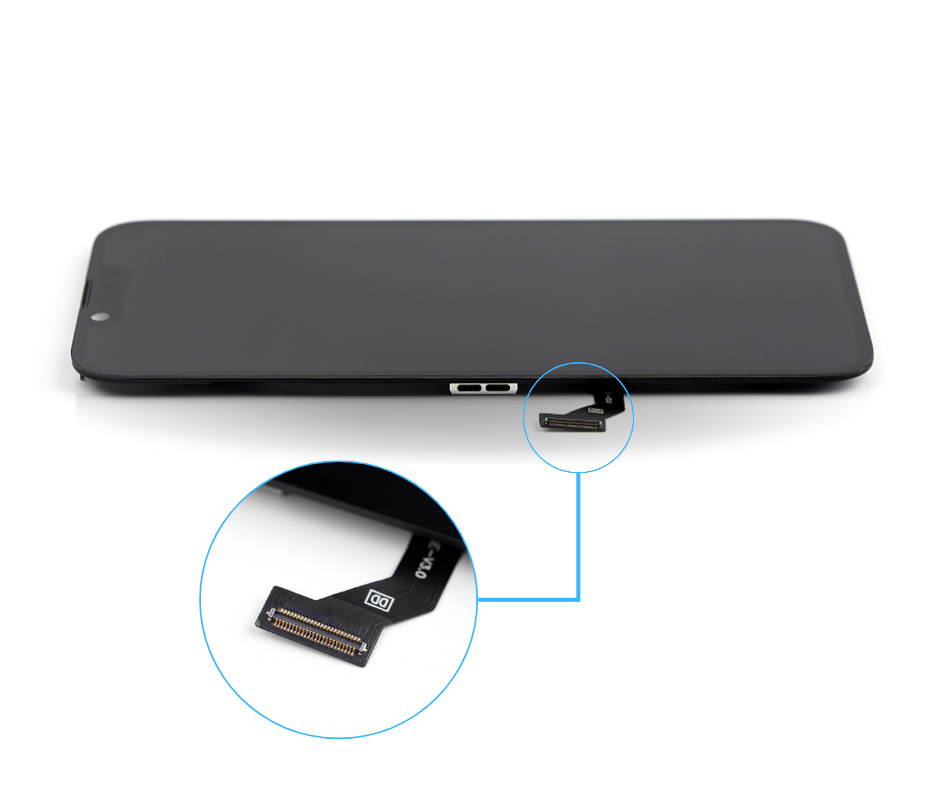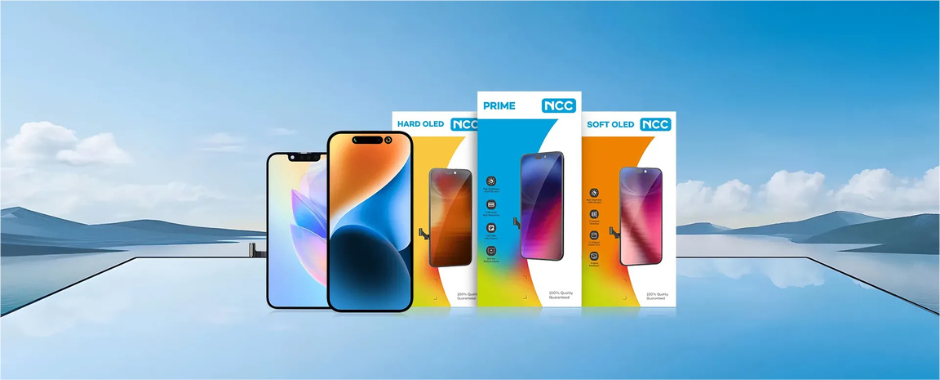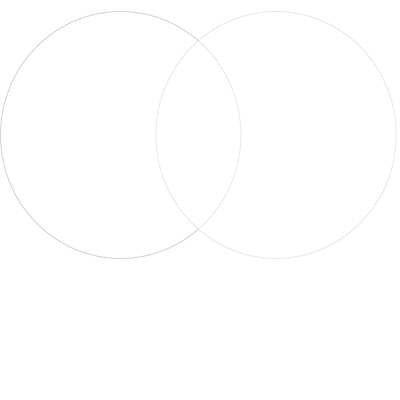
As a distributor or repair professional handling iPhone screen replacement assemblies, conducting rigorous quality inspections upon receiving aftermarket screens from your supplier is vital. A thorough inspection process not only guarantees customer satisfaction but also reduces after-sales issues, strengthens your reputation, and helps grow your business. With the vast variety of brands and fluctuating quality in the aftermarket industry, establishing a standardized and methodical inspection workflow is essential.
This article offers a detailed guide on key inspection points before and after installation, ensuring your replacement screens meet or exceed customer expectations.

1. Initial Inspection Upon Receiving iPhone Screen Replacement Assemblies
> Appearance Inspection
● Packaging Condition:
Ensure packaging is intact without damage, dents, or moisture. Labels indicating model, production date, and batch number should be clear and accurate.
● Screen Glass Surface:
Carefully check the glass for scratches, bubbles, cracks, or dirt that can affect appearance and functionality.
● Flex Cables and Connectors:
Verify that flex cables are intact without tears or bends. Connector pins must be straight, clean, and free of oxidation or corrosion.

> Specification Confirmation
● Model Compatibility:
Confirm the replacement screen exactly matches the intended iPhone model (e.g., iPhone 12, iPhone 13 Pro) to avoid compatibility issues during installation.
● Complete Accessories:
Ensure all necessary parts like adhesives, dust filters, earpiece mesh, and front camera lenses are included in the iPhone screen replacement assembly kit.
2. Detailed Functional Testing of iPhone Screen Replacements
To ensure the highest quality, use test devices or professional diagnostic tools to verify:
> Display Quality
● Fit and Finish:
After installation, check for any uneven gaps or raised edges that may indicate poor assembly or faulty screen dimensions.
● Visual Clarity:
Inspect the screen under bright light for dark spots, lines, color distortion, or other visual abnormalities.
● No Foreign Particles:
Confirm the absence of dust, bubbles, or debris trapped beneath the glass.
● Touch Responsiveness:
Perform swipe and multi-touch tests to detect any dead zones or delayed responses.
● Brightness and Color Accuracy:
Verify the screen reaches the iPhone screen assembly’s maximum brightness levels and displays natural color tones without excessive yellowing or blue tint.
> Touchscreen and Sensor Functionality
● Smooth and Accurate Touch:
The touchscreen must respond smoothly and immediately across the entire surface, supporting gestures and multi-touch.
● True Tone Display:
Ensure the True Tone feature adjusts color temperature according to ambient lighting conditions, if supported.
● Ambient Light Sensor:
Verify automatic brightness adjustment works correctly.
● Proximity Sensor:
Confirm the screen turns off during calls as expected.
> Fingerprint Recognition (If Applicable)
● For screens with integrated Home button assemblies, test fingerprint recognition functionality. Note that many aftermarket replacements may not support Touch ID, which should be clearly communicated to customers.
3. Durability and Batch Sampling
● Durability Checks:
Lightly tap screen edges to detect looseness or structural weaknesses.
● Random Batch Sampling:
Perform inspections on random samples from different batches to ensure consistent quality and catch batch-specific defects early.
4. Documentation and Feedback Loop
● Maintain comprehensive inspection records for every batch, documenting all findings and any issues detected.
● Immediately report defects or recurring problems to your factory or supplier to facilitate corrective actions and ongoing product improvements.
5. Additional Tips for Effective Inspection
● Use professional testing equipment or partner with third-party labs to increase accuracy and credibility.
● Select suppliers with strong reputations and proven track records for consistent product quality in **iPhone screen replacement assemblies**.
● Clearly inform your customers whether the screen is an original Apple part or an aftermarket replacement to manage expectations and build trust.
NCC is a globally recognized leader in aftermarket iPhone screens, known for its dedication to quality and innovation. Each iPhone screen replacement assembly undergoes comprehensive batch testing to ensure optimal display performance, touch sensitivity, sensor accuracy, and durability. With over 25 million units sold worldwide and coverage in more than 20,000 retail locations, NCC has become the trusted partner for countless distributors and repair shops in the UK and beyond.
Choosing NCC means working with a reliable supplier who prioritizes your business success and customer satisfaction.

To streamline your inspection workflow, we offer a free, easy-to-use Google Sheets template covering all critical inspection points with step-by-step instructions. Use it to standardize your quality checks and maintain detailed records efficiently.
\[Download or Access the Quality Inspection Template Here]
By implementing this systematic approach to inspecting aftermarket iPhone screen replacements and assemblies, you can ensure your products deliver exceptional quality, enhancing customer satisfaction and strengthening your competitive edge in the mobile repair market






